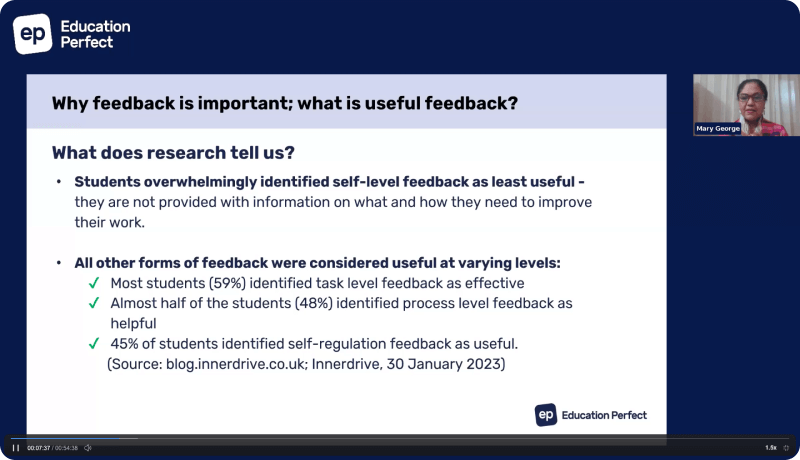Amplifying All Student Voices
I was asked a really great question by one of my colleagues this morning:
How did you become so confident at standing up and performing your poetry?
It made me think about the history of my voice and how it came to find itself amplified through a microphone, on a stage, in front of an audience of (almost) complete strangers. Where did it all begin? Perhaps it began in Kindergarten show and tell… Or Student Representative Council election speeches in Year 3… Or my School Captain speech in Year 6? I’d say it probably started in Year 8 when my Drama teacher encouraged me to audition for the local ensemble, which I was lucky enough to be accepted into, lighting the fire inside me for the stage and for performance.
But this is not a common story – especially for an individual with an patriarchal ethnic background that does not traditionally showcase the voices of it’s women. It’s also not a common story for a variety of individuals in numerous minority or marginalised groups whose voices are oppressed for cultural or socio-political reasons. And yet – we live in an era where almost every single human being on the planet has a smart phone connected to some form of social media. An era that has seen an explosion in communication, and the debris of a spectrum of opinions with and without filters.
But I am curious – where does any person’s voice journey begin? Formative childhood experiences certainly play a huge role; however, how can education (and in this case teachers) nurture this? Can an educational experience really significantly alter the path of an individual’s growth as a speaker?
In the Australian Curriculum there are a series of Key Competencies which are embedded into all the subject syllabi. Notice in the excerpt below the requirement for these skills to be contextual and lifelong:
“The general capabilities play a significant role in the Australian Curriculum in equipping young Australians to live and work successfully in the twenty-first century. In the Australian Curriculum, capability encompasses knowledge, skills, behaviours and dispositions. Students develop capability when they apply knowledge and skills confidently, effectively and appropriately in complex and changing circumstances, in their learning at school and in their lives outside school.”
One of these key competencies is Literacy, of which speaking and listening are key skillsets. They are actually presented as two out of the total of six, giving them a 30% weighting in the entire repertoire of reading, writing, creating, viewing, speaking and listening. Surely such key skills would be represented quite heavily in teaching and learning programs and assessments of ALL subject areas (as the Key Competencies are intended to be)? This doesn’t seem to be the case in a majority of schools.
As I work with English departments around the country I am seeing a strong pattern emerge where speaking and listening tasks only form about a quarter or less of the total amount of assessments a student will have to partake in, in a calendar year. A more prevalent form of assessment is that of reading and writing, especially in the forms of creative and critical. The rationale for this is that the English exams students sit in their final year of school feature these forms and skills heavily so they should take precedence in all years of schooling in order to give students consistent practice. But if we look at the bigger picture, how does producing a creative written or critical text help students to apply their knowledge in a way that will equip them to deal with complex and changing situations in their lives outside of school? It’s likely they will produce a creative piece of text in a heartfelt card or speech at a milestone occasion, and likely that they will have to construct a complaint email or cover letter persuading an employer of their suitability for a role; but an essay or narrative? Are these forms, and the way we teach them, for the students, or for the test?
Developing student voice is inherently linked to a student’s feeling of self worth, which in turn contributes to their confidence in themselves and their ability to form strong interpersonal relationships. If a student isn’t vocal, perhaps it is not that they are ‘just introverted’ or ‘disengaged’, perhaps it’s just they don’t think they need to be; that their voice is not one that needs to be heard. However it’s not whether they are vocal or not that should concern us, it should be the reasons why they are or are not vocal.
Have they not been given enough opportunities to speak up or topics they feel confident speaking about? Have they tried to be vocal and been silenced? Or are they simply unsure how to ‘speak’ as they struggle to navigate the nuanced skills of pitch, pace, tone, register and body language. In any case – teachers have a chance to create change. Every teacher in every subject has the power to platform the voices of every one of their students. This is not just a requirement of the curriculum, but our duty as nurturers of the next generation of articulate and expressive members of society.
I have considered a few strategies which could be implemented in a classroom by any teacher to help students build their ‘voice’:
- Think, Pair, Share – giving students an ‘A’ or ‘B’ role and setting up the activity with a closed question or research into a topic area.
- +3, -3 – an activity where you create a card each for the numbers -3 to +3 and place them in order around the room. Give the students a yes or no statement and they have to choose to stand underneath one of the numbers that represents how much they agree or disagree. To sit back down they need to raise their hand to justify why they picked that number.
- Fishbowl teams – put your students in teams and have each team submit one member to sit in the ‘fishbowl’ group. These ‘fishbowl’ students sit in the centre of the room in a circle with their team behind them. The students in the centre are given a topic to discuss and once everyone of them has spoken, the teams switch to the next player. You could also combine this with De Bono’s hats.
I hope these might inspire you to consider the role of student voice in your classroom and your important position in nurturing and amplifying student voice.




